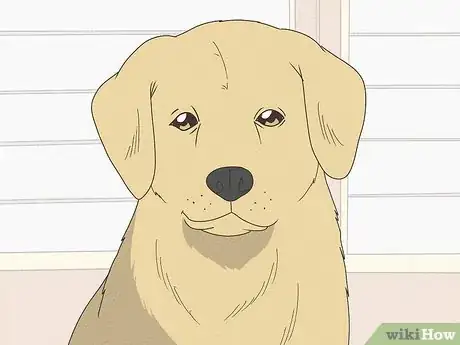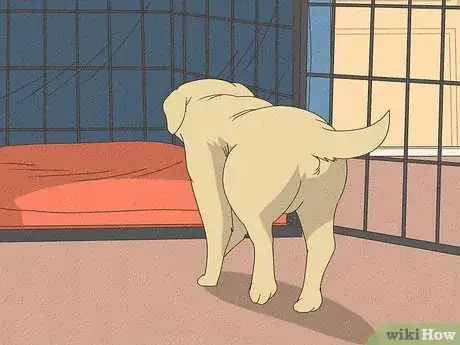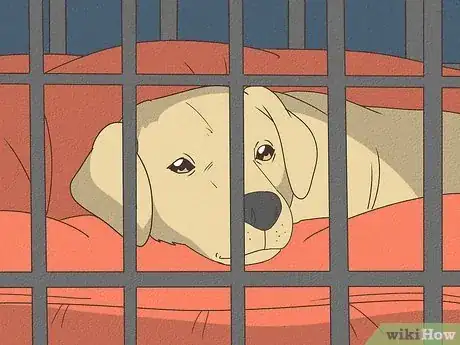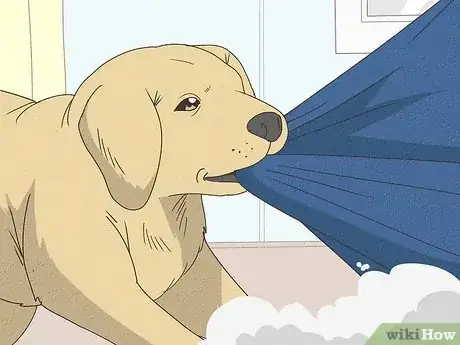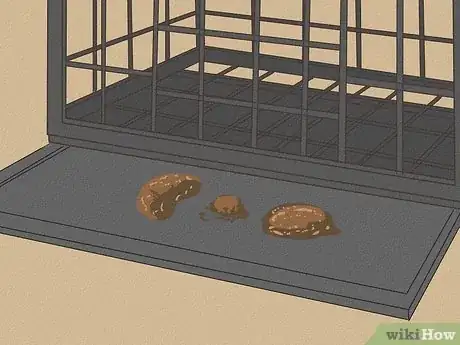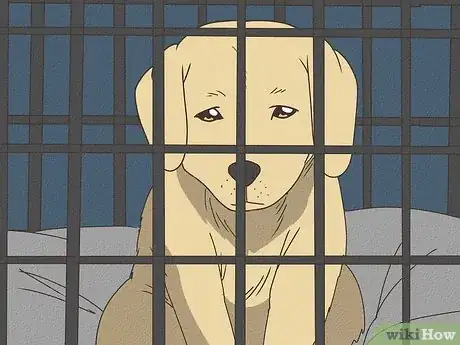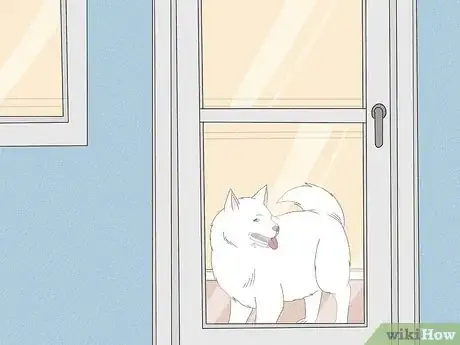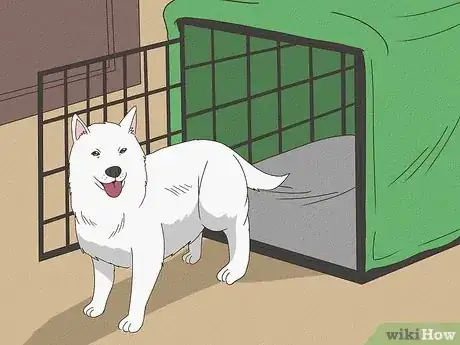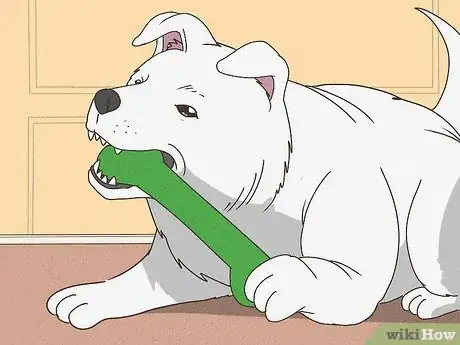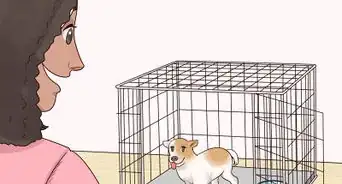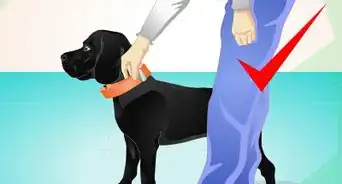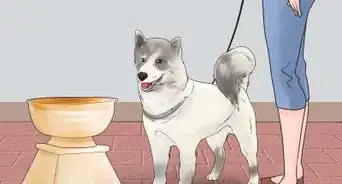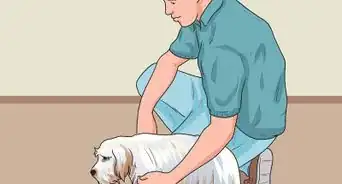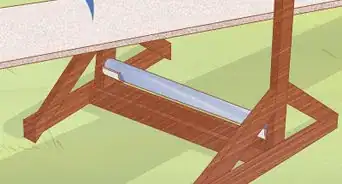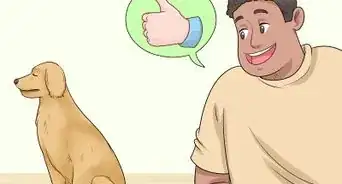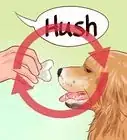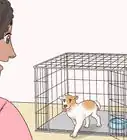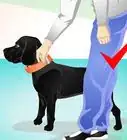This article was co-authored by Osama Maghawri and by wikiHow staff writer, Hunter Rising. Osama Maghawri is a Dog Trainer and Founder of OneStopK9, a dog training service in Miami, Florida. Osama utilizes balanced training methods to teach communication between owners and dogs. He specializes in basic obedience and behavioral issues such as resource guarding, fear-based aggression, and leash reactivity. Osama also helps owners understand the behaviors of their breed and how to continue training on their own in the future.
There are 10 references cited in this article, which can be found at the bottom of the page.
This article has been viewed 6,071 times.
A crate is great for keeping your pup out of trouble when they’re unsupervised, but how can you tell if your dog is ready to be left out on their own? Even though your dog has learned to love their crate, it’s probably safe to try letting them roam freely when you’re away. Before you leave your pup loose in your home, there are just a few things to keep in mind. We’ll walk you through the signs that your dog doesn’t need to stay in its crate and how you can gradually make them feel comfortable alone at night or when you’re away.
Things You Should Know
- Keep crate training your dog until they’re 1 or 2 so they’re not as destructive when they’re left alone.
- Stop crate training your dog when they don’t whine about going in their kennel and when they stop having accidents at home.
- Try letting your dog be alone outside of their crate for short periods of time. If they behave and don’t have accidents, try leaving for longer stretches.
- Keep the crate with the door open after you train your dog since they’ll naturally use it as a comfortable place to rest.
Steps
How to Stop Crate Training
-
1Keep the crate in a common room with its door open. Your dog sees their crate as a hideaway and it could stress them out if you get rid of it. Leave the crate in the room where you spend a lot of time so they can still go inside on their own and be close to you. Just don’t close the door behind them. Since your dog already feels comfortable inside their crate, they may stay in it while you’re away without having to give a command or shutting the door.[7]
- If you want to stop crate training at night, keep the crate in your bedroom and cover the top and sides with a blanket. That way, the crate feels safer and more enclosed.
-
2Leave your dog in an enclosed room when you go out. Rather than giving your dog roam freely throughout your home, choose a single room to keep them in at first. Try to pick a room with a hard floor, such as a kitchen, laundry room, or bathroom, so it’s easy to clean up any accidents they have. Keep your dog out of other rooms by closing the doors or putting a baby gate in the doorway.[8]
- As your dog gets more comfortable while you’re away, slowly give them access to more rooms.
- Bring your dog’s crate into whatever room you’re keeping them in. Even if your dog gets a little stressed out, they can go back into their crate and feel at home.
-
3Start leaving your dog alone for longer periods of time. At first, leave your dog at home without locking them in their crate and go outside for about 10 minutes. When you come back in, ignore your dog for the first minute so they don’t get overly excited. Keep going out for 10-minute increments until your dog doesn’t react to you coming and going. After that, start going out for an hour at a time. Slowly increase how long you’re away as your dog gets more comfortable.[9]
- If your dog starts acting overly excited again, take a step back and leave your dog unattended for less time. Once they feel relaxed, then try increasing the amount of time you’re away again.
- If your dog has an accident, clean it up right away and go back to putting them in the crate again when you leave. Next meal time, feed your dog where they had their accident so your dog learns not to go to the bathroom where they eat.
- Most dogs will sleep while you're asleep through the night, so just tell them a command like "Bedtime" when you're heading to bed. Your dog will get into the routine of going to your room and sleeping in their crate or bed.
-
4Give your dog mentally-stimulating toys when they’re alone. If your dog is home alone with a lot of energy, then they’re more likely to make a mess or misbehave. Keep your dog engaged by leaving a few new toys out they can play with. Try using treat puzzles, snuffle mats, or a ball launcher so your dog can tire themselves out without getting into trouble.[10]
- Rotate your dog’s toys every few weeks so they don’t get bored.
Warnings
- Your dog may act differently when you’re around, so even if they never jump up on the furniture while you’re home, there’s a chance they’ll do it when you’re not home.⧼thumbs_response⧽
- Avoid putting your dog in their crate as a punishment since they’ll be more afraid of it in the future.[11]⧼thumbs_response⧽
- Avoid leaving your dog in a crate for more than 5 hours at a time so they don't have an accident. A good rule of thumb for puppies is letting them out of their crate once every 3 to 4 hours.[12]⧼thumbs_response⧽
Expert Interview
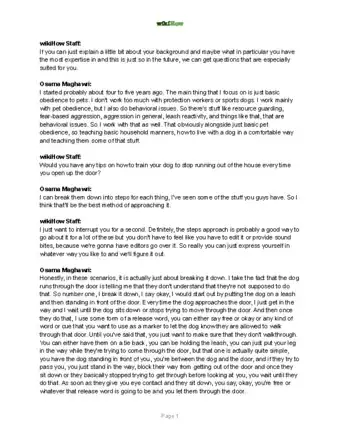
Thanks for reading our article! If you’d like to learn more about training your dog, check out our in-depth interview with Osama Maghawri.
References
- ↑ https://www.hssv.org/wp-content/uploads/2019/04/Crate-Training.pdf
- ↑ https://www.hsbh.org/wp-content/uploads/2019/11/DogBehaviorPamphlet.pdf
- ↑ https://www.humanesociety.org/resources/crate-training-101
- ↑ https://resources.bestfriends.org/article/puppy-mill-rescue-dogs-transition-home-life#Crate
- ↑ https://kb.rspca.org.au/knowledge-base/why-and-how-should-i-crate-train-my-dog/
- ↑ https://kb.rspca.org.au/knowledge-base/why-and-how-should-i-crate-train-my-dog/
- ↑ https://resources.bestfriends.org/article/puppy-mill-rescue-dogs-transition-home-life#Crate
- ↑ https://www.humanesociety.org/resources/crate-training-101
- ↑ https://www.whitehorse.vic.gov.au/living-working/pets/dogs/dog-behaviour/leaving-your-dog-home-alone
